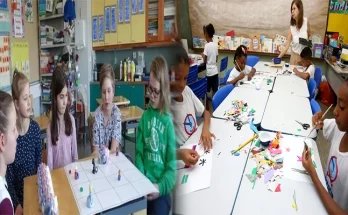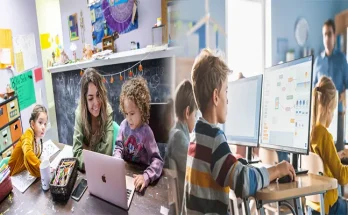If you think back to your time in school, the teacher-centered approach was probably more common. In this type of learning environment, the teacher is responsible for providing all the knowledge and information that students need in order to learn. This method is still used today, but it’s not as effective at helping students develop into lifelong learners or critical thinkers because it does not provide much opportunity for student input or active participation. A student-centered approach to learning has a few distinct advantages over its counterpart:
A student-centered approach to learning emphasizes the importance of making education relevant and meaningful to each student.
The goal of student-centered learning is to help students develop their own interests and passions. This can be achieved through a number of different methods, such as allowing students the freedom to choose what they study or making sure that teachers are available for support whenever it’s needed.
Student-centered approaches also focus on the whole person–not just what they’re learning at school, but how they feel about themselves and their environment as well. Students are encouraged to explore their own interests rather than being told what those interests should be; this helps them develop into more confident adults who know how best to use their talents in order to contribute positively toward society’s goals.
Students learn best when they are able to explore ideas and concepts in ways that are meaningful to them.
Students learn best when they are able to explore ideas and concepts in ways that are meaningful to them.
The following are some student-centered approaches that can help you create an environment where students feel empowered, engaged and motivated:
Student-centered learning allows teachers to teach students how to be lifelong learners and critical thinkers.
Student-centered learning allows teachers to teach students how to be lifelong learners and critical thinkers. Teachers who use a student-centered approach encourage students to take ownership over their own learning experiences and outcomes.
By placing the responsibility on the student, you’re allowing them to be more self-directed in their education, which can help them develop skills such as critical thinking, problem solving and collaboration that are essential for success in college or career.
Teachers who use a student-centered approach encourage students to take ownership over their own learning experiences and outcomes.
Teachers who use a student-centered approach encourage students to take ownership over their own learning experiences and outcomes. Teachers should be able to adapt their teaching style to suit the needs of the students, assess student progress and adjust their teaching methods accordingly, or give students the freedom to choose how they learn.
Student-centered learning assumes that children come into classrooms with a wide range of abilities and interests, but all must be supported, challenged and encouraged equally.
A student-centered approach to learning assumes that children come into classrooms with a wide range of abilities and interests, but all must be supported, challenged and encouraged equally. This means teachers must be flexible with their curriculum based on the needs of their students.
It also requires teachers to hold high expectations for all students in terms of achievement levels and behavior; this is sometimes referred to as “high stakes” or “high standards.”
A student-centered approach to learning allows teachers to be flexible with their curriculum based on the needs of their students.
A student-centered approach to learning allows teachers to be flexible with their curriculum based on the needs of their students. Teachers can also be flexible with teaching methods, student learning styles and even student interests. This approach allows for more individualized instruction and ensures that all students are engaged in their educational experiences at every moment in each lesson.
In a nutshell, the goal is for students to leave school ready for college or work with the skills needed for success!
In a nutshell, the goal is for students to leave school ready for college or work with the skills needed for success!
A student-centered approach focuses on what’s best for each individual student. Teachers who use this method encourage their students to take ownership over their own learning experiences and outcomes by providing them with opportunities to explore ideas in ways that are meaningful to them. The result? Students develop confidence in themselves as learners and become motivated by their passions–which often leads them down paths they never thought possible before!
In conclusion, a student-centered approach to learning allows teachers to meet the needs of all their students. It gives them the freedom to explore concepts and ideas in ways that are meaningful to each child, while still emphasizing important skills like critical thinking and problem solving.





